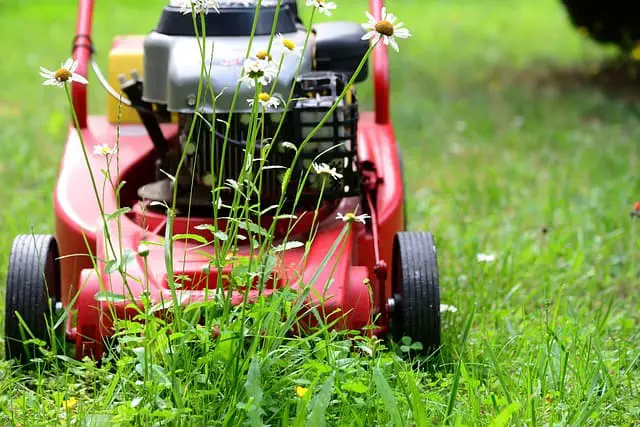Generally, a snow blower’s spark plug should last somewhere between 100,000 miles and 120,000 miles. But, ones made of iridium or platinum will last much longer so long as the engine doesn’t require oil or you don’t leave it idling for long periods of time.
This basically translates to once per season or after 100 hours of use. It’s not difficult to keep up with the spark plugs on a snow blower, but it’s one of the most essential parts of which to stay on top.
How Often Do You Have to Change a Spark Plug in a Snow Blower?
Typically, and to remain on the safe side, you should always change your spark plug every season before the first snow. This way your blower will be good to go and ready for anything. However, most manufacturers guarantee their spark plugs for up to 100,000 miles.
But, it’s important that you read the directions on the package of the spark plug. Some manufacturers recommend checking the spark plug after every five hours of use while others say 15 to 30 hours. It will really come down to how often you use your snow blower and the length of time in which you run it.
Should You Clean Spark Plugs for a Snow Blower?
Yes, you should clean your snow blower’s spark plug every 20 to 30 hours of use. This will help extend the life of the spark plug and allow you to catch any problems with it before they occur.
That said, if you have a snow blower still under warranty, follow the manufacturer’s directions precisely. This includes the brand, type and model of spark plug they recommend. This way you shouldn’t run into problems in the case an issue arises with the ignition or electrical system.
How Do You Know a Snow Blower’s Spark Plug Needs Changing?
The best way to know a snow blower’s spark plug needs changing is to check it. Most problems will be visible with signs that include:
- Engine fails to start up or it stalls
- It takes a lot more effort than it should for the engine to start
- The spark plug has signs of discoloration, corrosion, oil and other such irregularities
- Fuel burns through more quickly than it should
- The sound of a misfire just as the snow blower starts up (turn it off immediately)
What Is the Average Lifespan of a Spark Plug in a Snow Blower?
Manufacturers often give a guarantee with their spark plugs for up to 100,000 miles (some as much as 120,000) or up to 100 hours of use. But, with the right care and attention to the spark plug, it can last for up to 200,000 miles or 200 hours of use.
But this will depend on where you live and how much snow you clear. In the event you do snow removal as a side job, then you’ll replace them every few weeks.
If you live in an area that receives mild snow, like Tennessee, then, theoretically, your snow blower’s spark plugs could last for years. But, if you live in northern New York or Wisconsin, then you’ll go through a spark plug per season guaranteed.
What Is the Difference between Iridium and Platinum Spark Plugs for a Snow Blower?
The standard spark plug often comprises copper. While these are good, average and typical types that are most affordable, iridium and platinum offer a little more durability and resistance.
Iridium spark plugs have a high melting point because of the incredible metallic element and composition it comprises – iridium. These are wear-resistant and have amazing consistency with small, powerful electrodes in the center. But, they do tend to be expensive.
Platinum is a little more common than iridium and a little less pricey. But, they generate more heat than iridium or copper. This ensures a reduction in debris buildup, thanks to the center electrode.
Where Are the Spark Plugs on a Snow Blower?
You should be able to locate the spark plug on your snow blower rather easily. They’re often on the top right of the unit or under a cover. It connects to the engine via a wire from the ignition. So, if you’re having a problem finding it, follow the ignition wire.
Are There Any Tricks to Make a Snow Blower’s Spark Plug Last Longer?
There are a few things you can do to recondition your old spark plugs and make them last longer for your snow blower. Not only will this help save a little money but it will also help reduce waste.
- Funk & Buildup: Many mechanics know that if you use a media blaster to remove the gunk, funk and buildup around a spark plug, it will make it work like new and for much longer than what the manufacturer recommends.
- Keep Receptacle Clean: Use some canned air or an electric-powered air hose every so often to clear out the debris from the receptacle where the spark plug goes. This will help the spark plug function at its top performance without any blockages or obstructions.
- Threading: In the receptacle and on the spark plug there’s threading. Keep these free and clear of dust, debris and other mess. Using an anti-seize compound will help greatly when you want to remove the spark plug in the future.
- Central Electrode: The most important aspect of a spark plug is the electrode at the center. So, it’s imperative you keep it clean. Use a bit of carburetor cleaner around the electrode to wash away any gunk from manufacturing. This will also remove the anti-seize on the tip.
How Much Do Snow Blower Spark Plugs Cost?
Spark plugs can cost between $2 and upwards of $20 or more depending on if it’s copper, platinum or iridium. Copper ones run between $2 and $5. But platinum spark plugs can come in a range of $4 to $11 and iridium will run you $7 to $30.
Hi, I’m John Stephens, chief editor and writer for Totalgardener.com. I’ve been gardening and raising animals for over 15 years starting with a small backyard plot in Northern Virginia where I grew corn, potatoes, squash, and using a high mulch technique called the Ruth Stout Method. I also raised ducks and small mammals for meat and eggs in a movable pen similar to the ones used by Joel Salatin. I later moved to Colorado where I experimented with growing greens using aquaponics inside. I eventually added a microgreens setup and home sprouting operation. I’m excited to share everything I’ve learned plus more from the other local gardening and animal raising experts I know.



